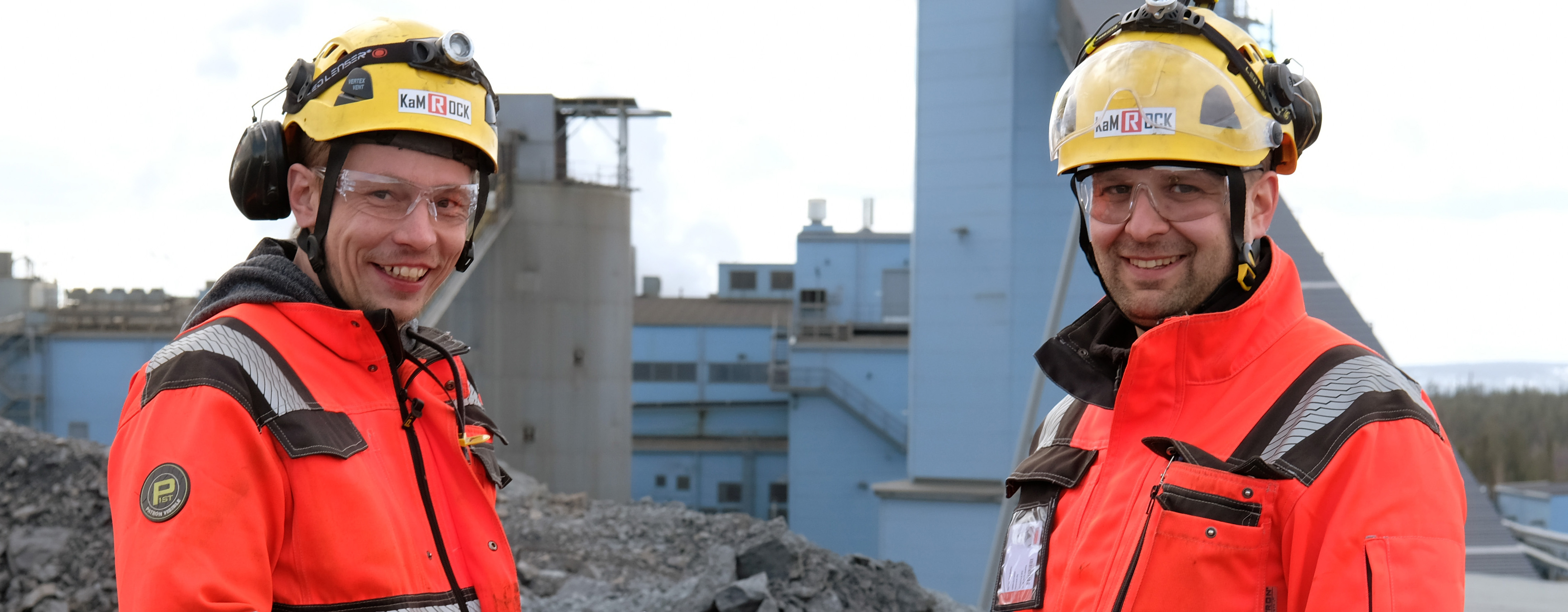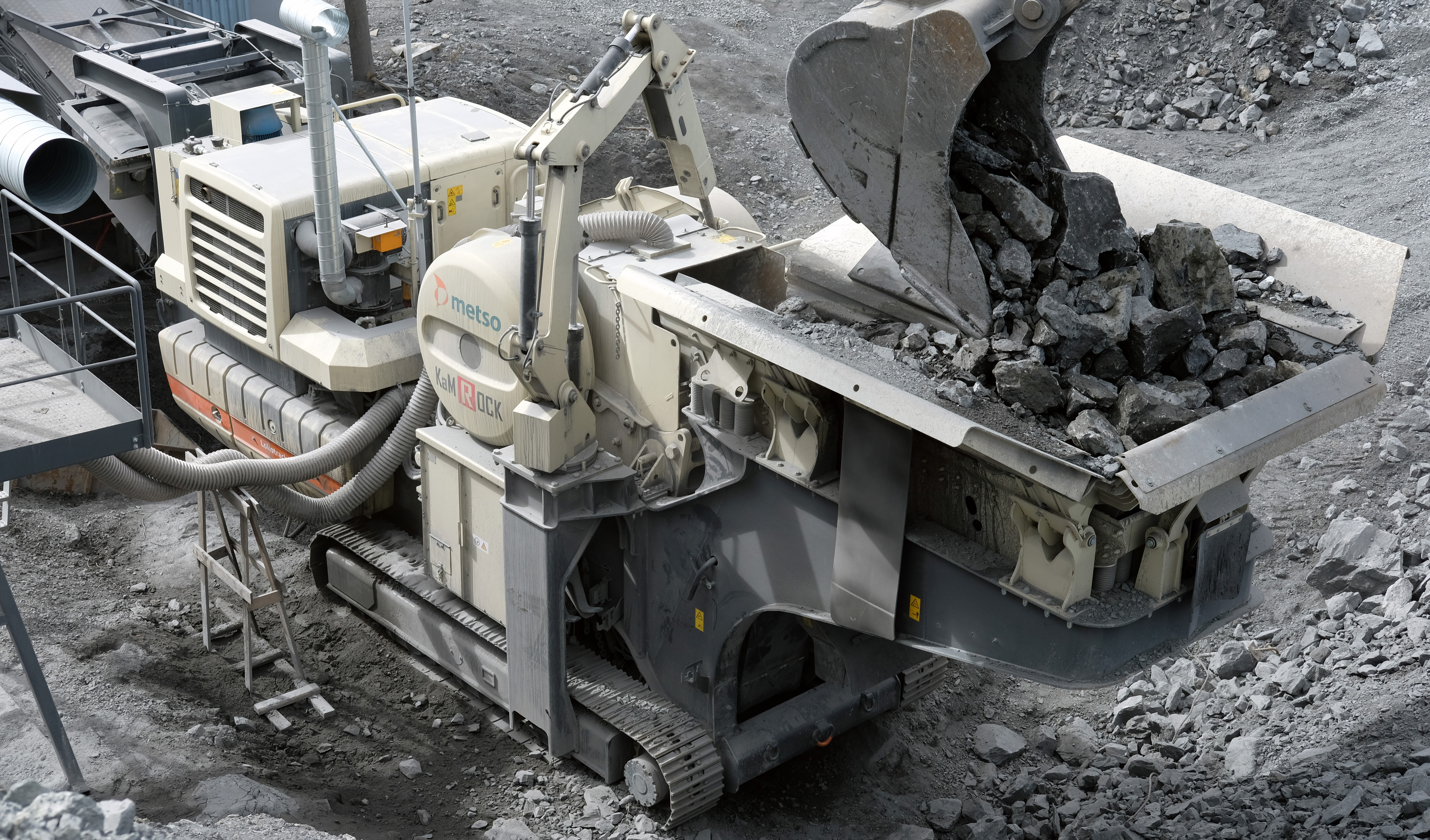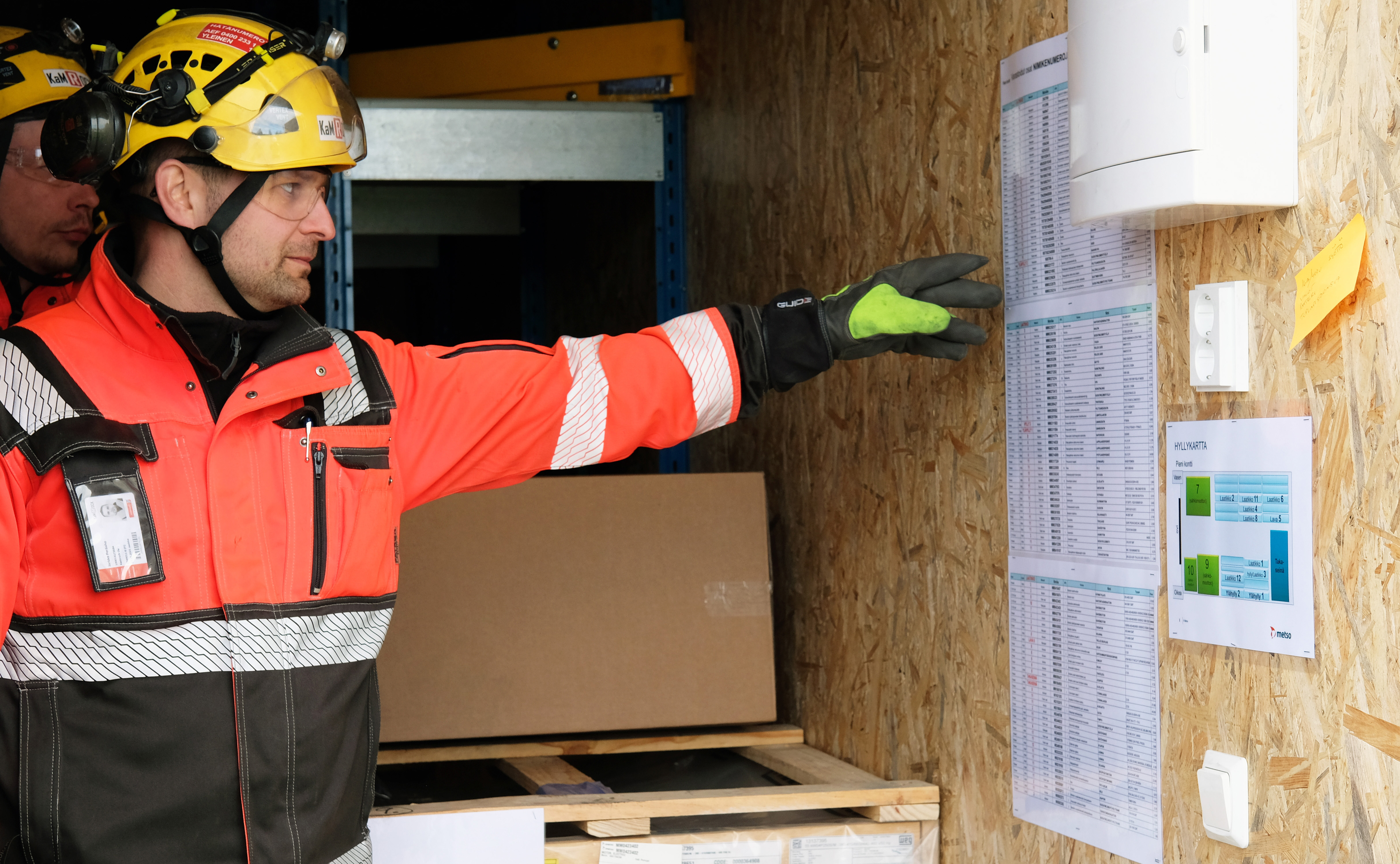In mine contracts, Kamrock uses Metso’s Lokotrack® equipment. At Kittilä, gold ore is crushed 24/7 with an electrically operated LT120E jaw crushing plant, and the foundations of nickel ore leaching fields at the Terrafame mine are created with a combination of an LT120 jaw crushing plant and an LT330D crushing and screening plant.
Kamrock Oy expands to mines in Northern Finland


Kamrock is engaged in high-quality stone material production, particularly stone material to be used when making asphalt and concrete, in different parts of Finland with two three-phase crusher and screening plants. The high quality of the end product is ensured with a vertical shaft impactor and an air classifier.
“Currently, we process around four million tons of ore and stone material each year. Our partner, Henning Huldén & Söner from Alaveteli, is responsible for the supply of the stone material to the crusher plants and its transport to storage piles,” says Jarkko Peräaho, Kamrock’s Managing Director.
Preventive maintenance and safety important at a gold mine
The Agnico Eagle gold mine is Europe’s largest gold mine. It operates without interruptions all year round and produced a little less than 6,000 kilograms of gold in 2016. In primary ore crushing, 4,500–6,500 tons of gold ore goes through a jaw crusher every day.
Preventive maintenance and a stockpile on site of all the key spare parts and wear parts are prerequisites for continuous operation without interruptions. In addition, the employees perform maintenance almost as fast as F1 mechanics: for example, it takes them 45 minutes to replace the wear parts of a C120 jaw crusher. The Lokotracks used in mining are inspected daily.
The contractor follows the mine’s strict safety regulations. In addition to using all the necessary safety accessories, the daily routines include a written notification of all risks observed for the mine.
“Metso’s crushers have been working fine”
Kamrock Oy’s powerhouse team, Managing Director Jarkko Peräaho and Production Manager Aki Hintta, have both been working in the crushing industry for a couple of decades. They say that the new mine ore crushing operations have gotten off to a good start: “When we landed the contract, Metso’s Area Sales Manager Mikko Takaniemi arranged two Lokotracks for us very quickly. The plants have been doing their demanding job very well, for which we have Metso to thank. We have only had to use the LT110 that we currently use as a backup plant to crush gangue for the needs of the plant,” Aki Hintta says.
“The start on December 27 was freezing, though: the temperature dropped to -41°C and strong winds beat the open mine site. We were still able to start the work just fine with the help of Metso’s Field Maintenance Engineers Timo Kankaansivu and Janne Leinonen. We have been crushing the volume of gold ore required by the mine without any interruptions for more than ten months now,” Jarkko Peräaho says.

Caption: All the necessary spare parts and wear parts can be quickly found based on specific part numbers from the containers presented in this photo by Jarkko Peräaho.
During the early months, the Lokotrack LT120E was still running on diesel, at which time around 25 liters of diesel per hour was used. It was converted to an electric drive, which made the work more cost-efficient. When powered by electricity, the crusher is not defeated even by large chunks of ore: it always crushes the ore into ever smaller pieces.
Kilograms upon kilograms of gold through the jaw every day
At the Agnico Eagle Kittilä mine, gold ore is currently mined from underground and then transferred by trucks to one of four stacks. According to instructions from a mining geologist, the ore is transferred with wheel loaders into a pile, from which an excavator supplies the ore to the Lokotrack. There are four to five grams of gold in one ton of ore, which means that several kilograms of gold goes through the jaw each day.
The size of the excavated ore pieces varies between 0 and 400 mm, and the jaw chops the pieces to 70–90 mm. The Lokotrack unloads the crushed ore directly onto a fixed conveyor that first takes it to a 2,000-ton storage silo and then into grinders.
According to the terms of the mine’s environmental permit, there is a separate air purifier in the crusher that removes dust from the jaws of the crusher and the unloading conveyor.